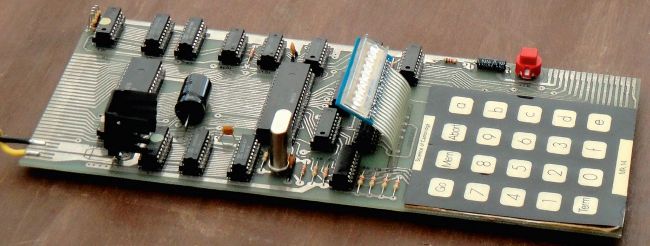EMUL ATION
Reviving the MK14 retro home computer
Mike Bedford uses emulation to learn about Sinclair’s first sub-£100 computer, which predated the better known ZX80 by three years.
OUR EXPERT
Mike Bedford hadn’t even thought he might one day own a computer by the time the MK14 appeared. That makes it no less of an interesting diversion for him, though.
QUICK TIP
A version of Tiny BASIC has been written for the SC/ MP – it’s called NIBL. So, we might wonder if it can run on a suitably expanded MK14, with memory expansion and VDU cards.
The Sinclair ZX80 went on sale in 1980 at £99.95, or T £79.95 in kit form. In so doing, it was responsible, in no small part, for kick-starting the British home computing revolution of the ’80s. However, it doesn’t tell the whole story. Nor is it correct to say, as is often suggested, that the ZX80 was the first computer to be offered for less than £100. That honour goes to a much lesserknown British computer called the MK14, our subject here. It’s probably quite different in many ways from anything you’ve seen before, and it was nothing like that better-known home computer we referred to above. But it’s no less a part of our computer heritage, so we thought it would be interesting and informative to delve into its unique features. This isn’t just talk, though, so if you fancy getting some hands-on experience of the MK14, we show you how to do that via emulation.
Introducing the MK14
Launched in 1977, the MK14 cost £39.95, making it half the price of the ZX80 in kit form. This is an entirely appropriate comparison, though, because our quoted price of the MK14 is also for a self-assembly kit. In fact, the MK14 was only ever made available as a kit of 31 parts, including the circuit board, all of which had to be soldered together. The company responsible for the MK14 was Science of Cambridge who, in the fullness of time, became Sinclair Research of ZX80, ZX81 and ZX Spectrum fame.

It might have been the first sub-£50 computer, but the MK14 was also one of the most basic.
The specifications of computers of the ’70s and the early ’80s tend to be eye-openers because of the almost unbelievably small memory capacities and processor speeds. The MK14 was no exception, having 256 bytes of RAM and 512 bytes of ROM. This nonvolatile memory held the monitor program, which allowed programs to be entered and executed, and the results displayed. Where the MK14 differed from almost all other microcomputers of the time, though, was its processor. The soon-to-be-launched home computers of the ’80s virtually all had Z80s or 6502s,and some earlier US machines had Intel 8080s. Not the MK14, though, which had a SC/MP. Pronounced Scamp, this little-known processor from National Semiconductor was an 8-bit design, which was clocked at 4.4MHz on the MK14.
While this figure is similar if not higher than the clock speeds of most of the early ’80s home computers, a clock figure is a notoriously poor measure of performance. Indeed, the SC/MP compared unfavourably to many of its competitors – see box (opposite) for more details. We should also point out that the MK14 didn’t have a case; it was purely a circuit board. In addition, it didn’t include the necessary 5V power supply, which you’d have needed to buy separately – just like a Raspberry Pi!